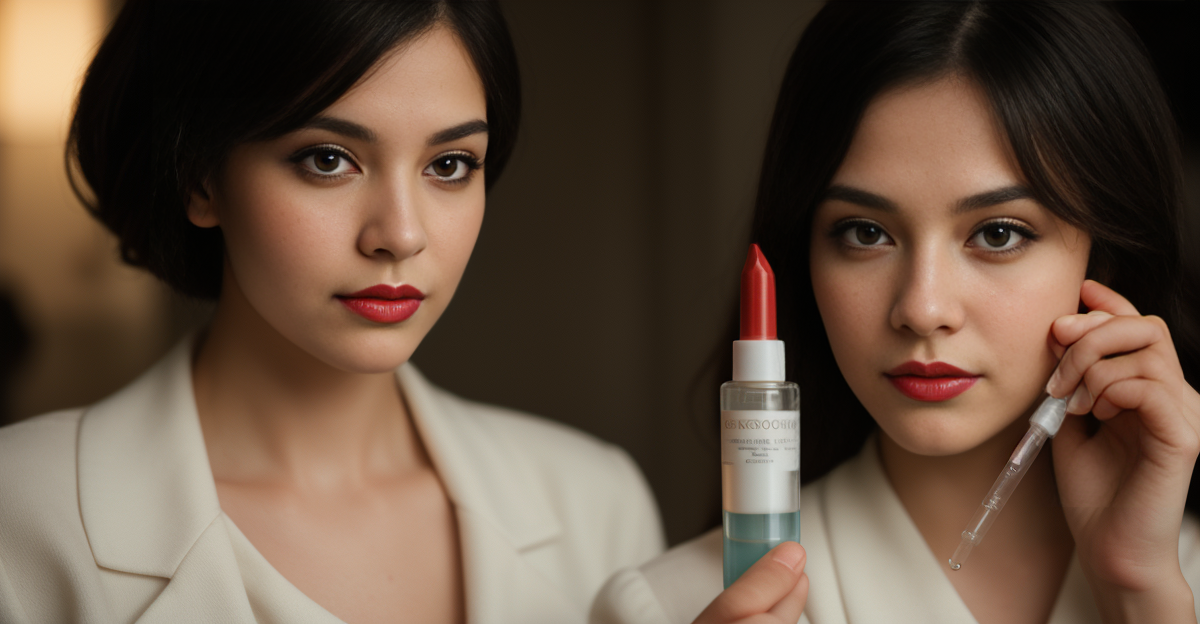
Are your favorite beauty products secretly disrupting your hormones? We unpack the drama of estrogen
Hey there, beauty lovers and curious minds! Quill here, ready to tumble down another internet rabbit hole. Today, we’re tackling a potentially unsettling topic: estrogen-mimicking chemicals in your makeup. Could those vibrant eyeshadows and silky lipsticks *actually* be interfering with your hormones? Cue the suspenseful music! We’re talking about chemicals that *act like* estrogen. Sounds like something out of a sci-fi thriller, doesn’t it? But the reality is, these sneaky substances might be hiding in your go-to products, potentially throwing your body’s delicate hormonal balance for a loop. Let’s dive in. ### Understanding Estrogen-Mimicking Chemicals: The Basics So, what *exactly* are these estrogen mimics, officially known as endocrine disruptors? Imagine your hormones as messengers, delivering crucial instructions throughout your body. Endocrine disruptors are like imposters who intercept those messages and deliver their own distorted versions. They can block, imitate, or otherwise disrupt your body’s natural hormones, including estrogen. The way they mimic estrogen is strangely fascinating. These chemicals have a molecular structure that’s similar enough to estrogen that they can latch onto estrogen receptors in your cells. Think of it as wearing an estrogen costume! Once attached, they can trigger estrogen-like effects, even when your body doesn’t need them. This can disrupt your body’s natural rhythm. ### The Usual Suspects: Makeup’s Most Wanted Now, let’s call out some culprits. Which chemicals are the biggest offenders when it comes to mimicking estrogen in makeup? * **Parabens:** These are preservatives used to prevent bacteria and mold growth in cosmetics, extending their shelf life. You’ll find them in everything from foundation to shampoo. Studies have indicated that parabens can exhibit estrogenic activity, meaning they can bind to estrogen receptors and potentially disrupt hormonal equilibrium. [Link to a study on parabens] * **Phthalates:** Often used to make plastics more flexible, these chemicals can sometimes be found in fragrances and nail polish. Because fragrance formulations are often protected as “trade secrets,” manufacturers aren’t required to list all ingredients explicitly. This means phthalates could be silently present in your “parfum” without your knowledge! Phthalates have been associated with various hormonal effects. [Link to an article on phthalates] * **UV Filters (Oxybenzone, Octinoxate):** Commonly found in sunscreens and lip products with SPF, these chemicals protect you from the sun but also carry the potential to disrupt your endocrine system. Oxybenzone, in particular, has demonstrated estrogenic effects in studies. ### The Potential Health Risks: Is It Worth It? Okay, so we know these chemicals *can* mimic estrogen. But what does that *actually* translate to for your health? Well, exposure to endocrine disruptors has been linked to a range of health concerns, including: * **Reproductive Health Issues:** This includes challenges with fertility, early onset of puberty in girls, and developmental problems. * **Hormone-Sensitive Cancers:** Some research suggests a possible connection between exposure to certain endocrine disruptors and an increased risk of breast and ovarian cancer. * **The “Dose Makes the Poison” Principle:** It’s crucial to remember that the level of exposure matters. Low doses of these chemicals might not have a noticeable impact, but repeated exposure over time could potentially lead to issues. The challenge lies in accurately assessing the risks. ### Big Beauty’s Role: Smoke and Mirrors? Here’s where things get a bit…questionable. The beauty industry is a massive business, and its lobbying efforts exert considerable influence on cosmetic regulations. Some argue that the industry has a vested interest in minimizing the perceived risks of these chemicals to safeguard their profits. Think about it: how often do you see marketing campaigns highlighting the *possible* dangers lurking in your favorite products? Instead, we’re constantly presented with images of perfect skin and promises of timeless beauty. It’s a carefully constructed narrative that often obscures the complete picture. However, the “clean beauty” movement is starting to make waves. Consumers are demanding greater transparency, and brands are beginning to respond by formulating products without potentially harmful chemicals. But is this a genuine effort to create safer products, or simply clever marketing? That’s the burning question. ### Empowering Consumers: Take Control of Your Beauty Routine So, what steps can *you* take? Don’t feel overwhelmed! Knowledge is your best tool. Here are some tips for making more informed choices: * **Read Ingredient Lists:** Familiarize yourself with potential endocrine disruptors like parabens, phthalates, and oxybenzone. Resources like the Environmental Working Group’s (EWG) Skin Deep database can be incredibly helpful. [Link to EWG Skin Deep database] * **Seek Safer Alternatives:** Prioritize brands that are committed to transparency and formulate their products without potentially harmful chemicals. Look for certifications like “EWG Verified” or “Made Safe.” * **Advocate for Change:** Support organizations that are working to strengthen cosmetic regulations and hold the beauty industry accountable. We’ve covered a lot today, from the science behind estrogen-mimicking chemicals to the beauty industry’s role in transparency and regulation. Ultimately, the decision rests with you. But armed with knowledge and a healthy sense of skepticism, you can take charge of your beauty routine and make choices that align with your values. What are your thoughts on all this? Have you started paying closer attention to the ingredients in your makeup? What steps are you taking to create a safer and healthier beauty routine? Share your thoughts in the comments below!
Enjoyed this? Check out our YouTube channel for video versions!
Enjoyed this? Check out our YouTube channel for video versions!



